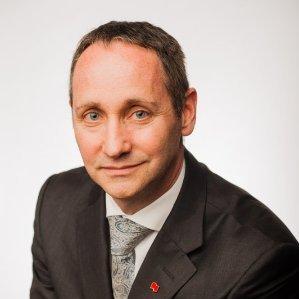A group of Canadian business leaders is calling on the federal government to require Canadian public pension funds to invest more within the country, arguing that doing so could address the nation’s persistent productivity problem by giving businesses greater access to capital.
But detractors of the proposal, and the pension funds themselves, say introducing local investment rules would compromise pensions’ mandates to provide secure retirement income for Canadians.
“One of the reasons why our pension funds are so strong is because there’s this separation of church and state.”
John Ruffolo
“This is private capital. It doesn’t belong to government. [The pension funds are] not sovereign wealth funds and people confuse them as such,” said John Ruffolo, founder and managing partner of Maverix Private Equity.
Ruffolo was the founder of OMERS Ventures, the early-stage venture capital (VC) arm of the Ontario Municipal Employees’ Retirement System, one of Canada’s largest pension funds.
“One of the reasons why our pension funds are so strong is because there’s this separation of church and state,” Ruffolo said.
Some of Canada’s eight public pension funds—known as the “Maple 8”—have also raised concerns in public statements about the risks of being overexposed to one country, citing the benefits of diversification.
Last month, an open letter by 94 current and former business executives, organized by Montreal investment management firm Letko, Brosseau and Associates, called on the government to change the rules governing homegrown pension funds to encourage them to invest more in Canada.
RELATED: The future of OMERS Ventures with Michael Yang
Stéfane Marion, National Bank of Canada’s chief economist and strategist, signed the letter, but told BetaKit he intended his signature to highlight the need for an influx of private capital of any stripe to help address Canada’s floundering productivity.
The country’s productivity—the value of gross domestic product (GDP) per hour worked— has experienced much slower growth relative to its Organisation for Economic Co-operation and Development (OECD) peers since 2001. Canada is now ranked 18th among OECD countries. Productivity is 72 percent of that of the United States.
Despite having one of the most educated workforces in the world, a dearth of private investment in Canada has led businesses to reduce their investments in productivity-boosting machinery and equipment, Marion wrote in a March report. Those investments could be anything from automating an assembly line to purchasing cutting-edge software.
In the report, Marion wrote that even though Canada saw a labour productivity gain of 1.7 percent in the last quarter of 2023, labour productivity has been down on the whole for three consecutive years.
The productivity declines have coincided with a flagging national standard of living.
“If you don’t have an increase in living standards, it impedes our ability to provide for our social safety net, to ensure it’s there in the future,” Marion said.
Canadian pension funds have become net sellers of Canadian assets and equities in particular since the mid-1990s, according to Statistics Canada data. As a share of total assets owned by trusteed pension funds, Canada decreased to just above 40 percent in the first quarter of 2023, down from more than 80 percent in 1996; for equities, the fall was even more significant, from 77 percent in 1996 to just 22 percent in 2023.
At the same time, Marion wrote in his March report, foreign investors have been “shunning” Canada. In 2023, Canadian investors acquired $53 billion in foreign securities, while foreign investors bought only $32 billion of Canadian securities—the smallest amount in 16 years—leading to a net outflow of $20 billion from Canada.
“There’s something wrong if the pensions don’t want to invest here,” he said. “Countries that succeed are those that are able to attract private capital to [their] shores. We need to be better at that in this country.”
Many of the funds have publicly pushed back against the notion that they aren’t sufficiently committed to Canada.
In a November op-ed in The Globe and Mail, Evan Siddall, the CEO of the Alberta Investment Management Corp., called the Letko Brosseau campaign a “self-serving and amateurish” critique that ignored many plans’ positions in Canadian fixed income, real estate, infrastructure and private equity and debt. AIMCo, which invests on behalf of multiple Alberta pension plans, has about half of its assets invested in Canada.
“It is not our role to prop up Canadian equity markets,” Siddall wrote.
The Ontario Municipal Employees’ Retirement System, a $130-billion pension fund for Ontario public-sector workers, said in a March statement it was a “huge champion for Canada,” with 25 percent of its portfolio invested domestically, and remains “very interested in finding new and exciting investment opportunities in Canada.”
Michael Wissell, chief investment officer at the Healthcare of Ontario Pension Plan, said in a November note to members that the fund has a “strong” commitment to investing in Canada, as it’s a “safe and stable country that offers attractive investment opportunities.” The plan has invested $60 billion of its total $100-billion portfolio in Canada.
The Caisse de dépôt et placement du Québec, one of the Maple 8, is the sole Canadian pension to have a dual investment mandate of providing retirement income and contributing to the Quebec economy, though Kate Monfette, the fund’s director of media relations, noted to BetaKit in an email that it would not be subject to any federal directive.
The $434-billion fund, which as of 2025 will be the first of the country’s pensions to reach the milestone of having more retirees than contributors, has invested $88 billion in Quebec as of Dec. 31.
“There’s something wrong if the pensions don’t want to invest here.”
Stéfane Marion
“Through deep knowledge of our ecosystem, we are able to identify the best opportunities and generate attractive returns. As we said recently when we published our annual results, our investments in Québec made a strong contribution to our performance—last year and in general,” Monfette said.
Marion said it would be hard to tell whether the CDPQ has boosted Quebec’s productivity, because the province’s economy is so heavily tilted toward small businesses with less than 100 employees, relative to other provinces.
“I’d like to think it would probably be worse in Quebec were it not for [the CDPQ], but you need to control for the industrial structure of the province,” he said. “I would say pension funds in general make a positive contribution.”
If the government wants greater pension investment in Canada, it should stop “pointing the finger” at funds and instead introduce public policy that incentivizes it, Ruffolo said, such as by improving the Scientific Research and Experimental Development (SR&ED) credit to make Canadian companies more attractive investments.
Matt Roberts, co-founder and general partner of CMD Capital, a seed stage-focused VC firm, said that greater rules around pensions’ domestic investment content would merely be a reversion to a pre-2005 norm.
RELATED: CDPQ’S $250-million Equity 25³ Fund is done after only four investments
In a Substack post, Roberts noted that foreign investment rules, removed in 2005 by the Paul Martin government, had limited pension funds to investing no more than 30 percent of their portfolios outside of the country. He argued their removal cratered pensions’ investments in domestic venture capital and made it harder for startups to grow and go public.
In the 1980s and 1990s, Canadian pensions played a major role in the venture capital and private equity ecosystems, Roberts said in an interview, because “If you [had] to keep 70 to 80 percent of your money in Canada, you needed to manufacture things to invest in.”
The country had a history of taking “riskier” companies public earlier, partly due to the country’s dominance in the oil and gas and mining sectors, but partly because pension funds were investing on either side of the initial public offering, Roberts said.
After the rules changed, he added, reaching the IPO stage became a much higher bar to clear, with companies needing to raise a series of progressively larger rounds and going public by series C or D.
“The pensions said, ‘Okay, we don’t need to create companies because we’re not going to invest in [Canadian] public companies anymore,’” Roberts said.
Ruffolo said the reality is more complicated. On the whole, he said, Canadian VCs “have not performed well.” They’re also often raising funds too small for the pensions to participate in. Two of Maverix’s biggest investors are pension funds, Ruffolo said.
“The Maple 8, they’re large, they don’t want to write $2- and $5- and $10-million cheques. They want to give $25-, $50- and $100-million. When you have a venture fund that’s $30 million in size and usually you have a limitation [for LPs] typically of no more than 15 or 20 percent of the fund, you’ve ruled out using that capital,” he said. It’s why pensions have on the whole cut larger cheques to fund-of-fund investment managers, including through Canada’s Venture Capital Action Plan program.
But he agreed with Roberts that as the Maple 8 have become behemoths, and some have consolidated other smaller pension funds under their investment management, “The number of doors to knock on [for funding] is shrinking all the time.”
Ruffolo said he likes the government’s proposal for “knock[ing] a little bit of sense” into the pension funds. When he led OMERS Ventures, Ruffolo said his rule was, when considering two investments with the same risk-reward profile, to pick the Canadian one.
“There is a subtle anti-Canada bias in a lot of people’s heads in pension funds,” he said. “But they’re missing that the risk profile for private assets goes up the moment you look at investments outside of Canada. … I do think they’re not thinking deeply enough on how to get the best assets, and Canada’s got some spectacular assets.”



